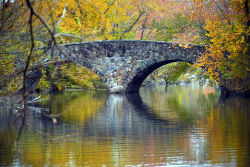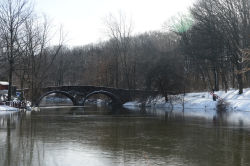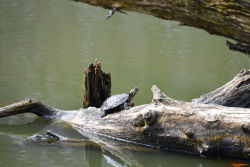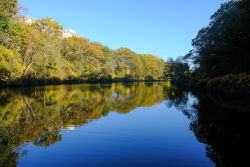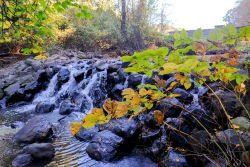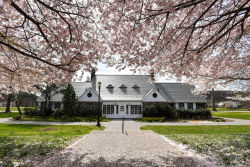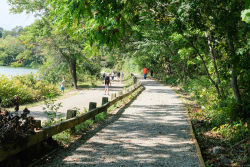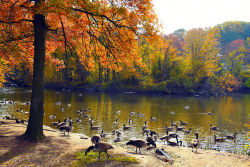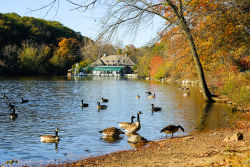Clove Lakes Park
Freshwater Wetlands in New York City - Clove Lakes Park
New York City once contained 224,000 acres of freshwater wetland. This valuable ecosystem can slow erosion, prevent flooding by retaining storm waters, filter and decompose pollutants, and slow global warming by converting carbon dioxide into oxygen at a prodigious rate. In the past 200 years, the increasing demands of a growing metropolis have resulted in most of this land being filled for construction. Only 2,000 acres of freshwater wetland remain in the city today, and many species that once called the wetland home have been lost forever.
Clove Lakes Park centers on Brook’s Lake, Martling’s Pond, and Clove Lake, which is actually two bodies of water. The steep banks along the lakes are covered with red oak (Quercus rubra), creating an impressive native woodland. Canada geese (Branta canadensis), mallards (Anas platyrhynchos), and numerous gulls, such as ring-billed (Larus delawarensis) and herring (Larus argentatus), frequent the lakes. Cardinals (Cardinalis cardinalis), red-eyed vireos (Vireo olivaceus), and white-breasted nuthatches (Sitta carolinensis) inhabit the shady woodland hillsides nearby.
The formation of wetlands can be traced back to the most recent ice age. A massive ice sheet called the Wisconsin Glacier advanced on New York City 75,000 years ago, pushing rock, soil, and boulders ahead. When the ice melted 17,000 years ago, water flowed to the sea, creating streams and rivers that carved through rock. Large glacial fragments broke off, melted, and left depressions called kettles. If layers of fine silt and clay were deposited on the bottom of the depressions, the kettles collected water and ponds formed. Where waters were shallow or flowed slowly, seeds and spores were able to take root and flourish. Generations of plants grew and decomposed, building peat-rich sediments. As wind and water eroded the soil, the steep slopes grew gentler, slowing the passage of water. Plant communities diversified under these favorable conditions, attracting animals that fed on the plants. The sophisticated food web that developed brought advanced predators to the wetlands: snapping turtles (Chelydra serpentina), wolves (Canis lupus), several species of hawks, and humans (Homo sapiens).
Water levels in wetlands are variable, influenced by the underlying rock and soil makeup, rainfall, season, and ground water inputs. Despite these variable conditions, freshwater wetlands teem with life. Vegetation ranges from plants that float on the water’s surface, such as duckweed (Lemna) and watermeal (Wolffia), to trees of the upland swamp forest, like red oak and silver maple (Acer saccharinum). Freshwater wetlands are critical habitat for native wildlife, providing breeding grounds for amphibians like the spotted salamander (Ambystoma maculatum), which spends one or two years in the water before emerging as an adult. Wood frogs (Rana sylvatica), spring peepers (Hyla crucifer), and Fowler’s toads (Bufo woodhousei fowleri) also breed in kettle ponds, filling the woods with their courtship songs in spring. Birds, such as red-winged blackbirds (Agelaius phoeniceus) and yellow warblers (Dendroica petechia), as well as mammals like muskrats (Ondatra zibethica), further contribute to this thriving ecosystem. In addition to housing these native species, freshwater wetlands also provide resting, breeding, and feeding grounds for hundreds of thousands of migrating birds. Many of these birds arrive in New York City only twice a year as they travel along the Atlantic flyway, a major migratory route.
Check out your park's Vital Signs
Clean & Safe
Green & Resilient
Empowered & Engaged Users
Share your feedback or learn more about how this park is part of a
Vital Park System
Contacts
Park Administrative Office: (718) 390-8000

